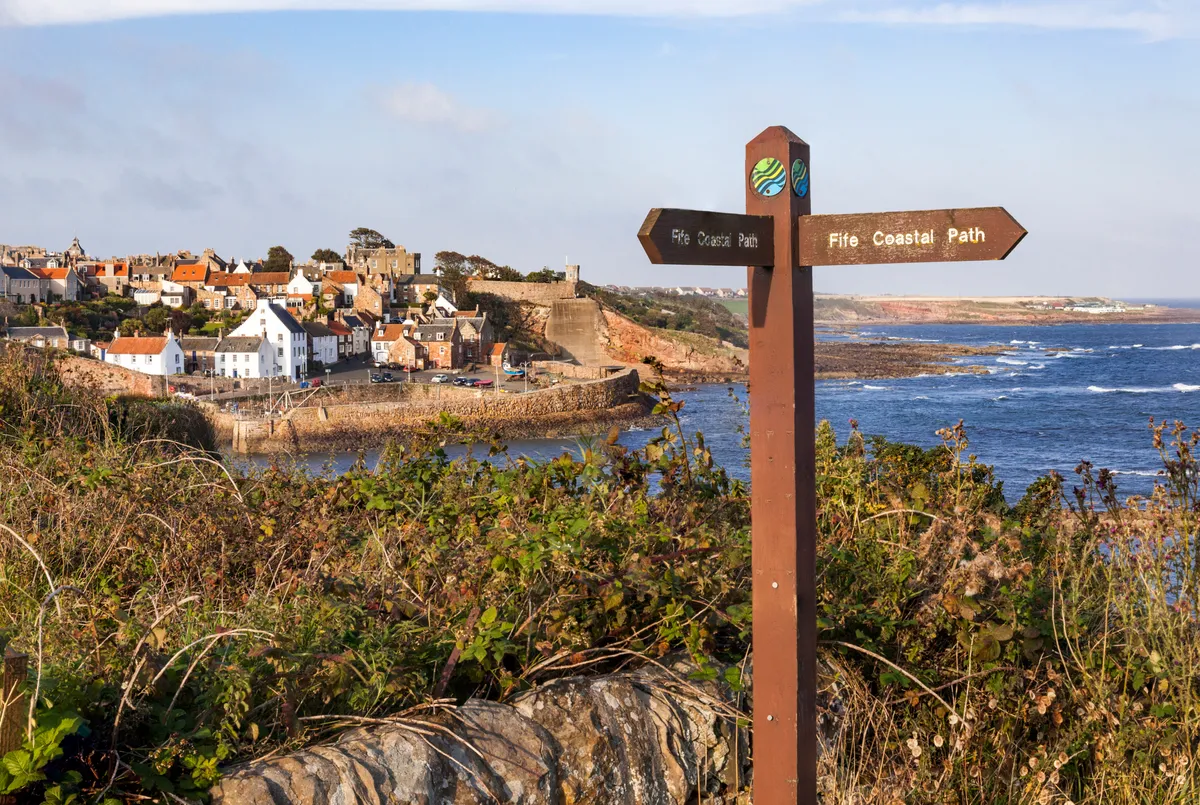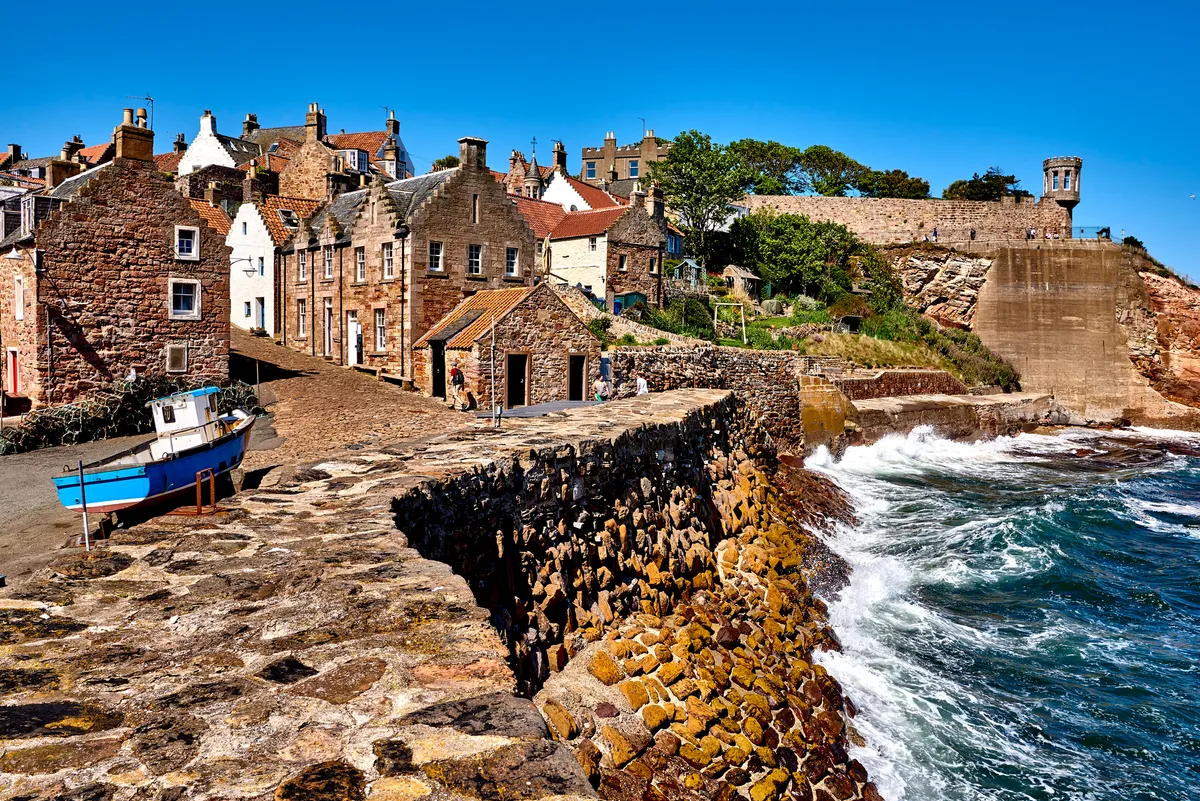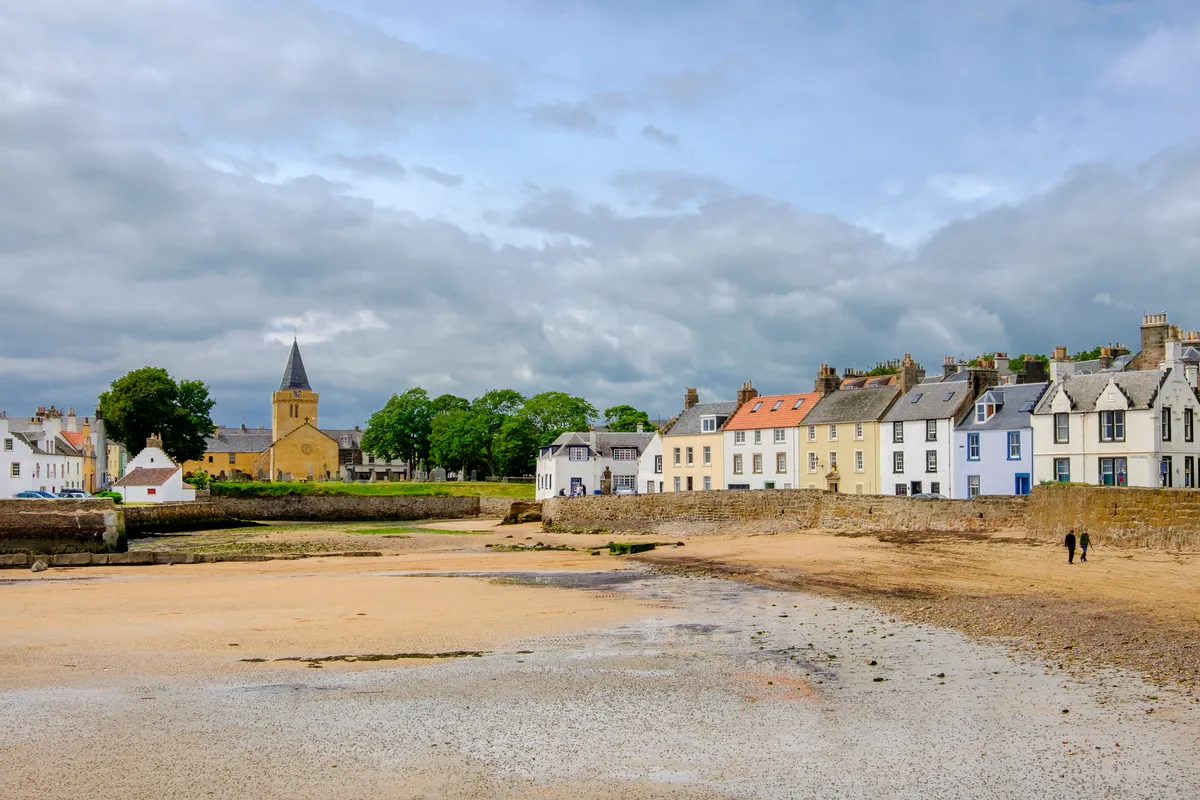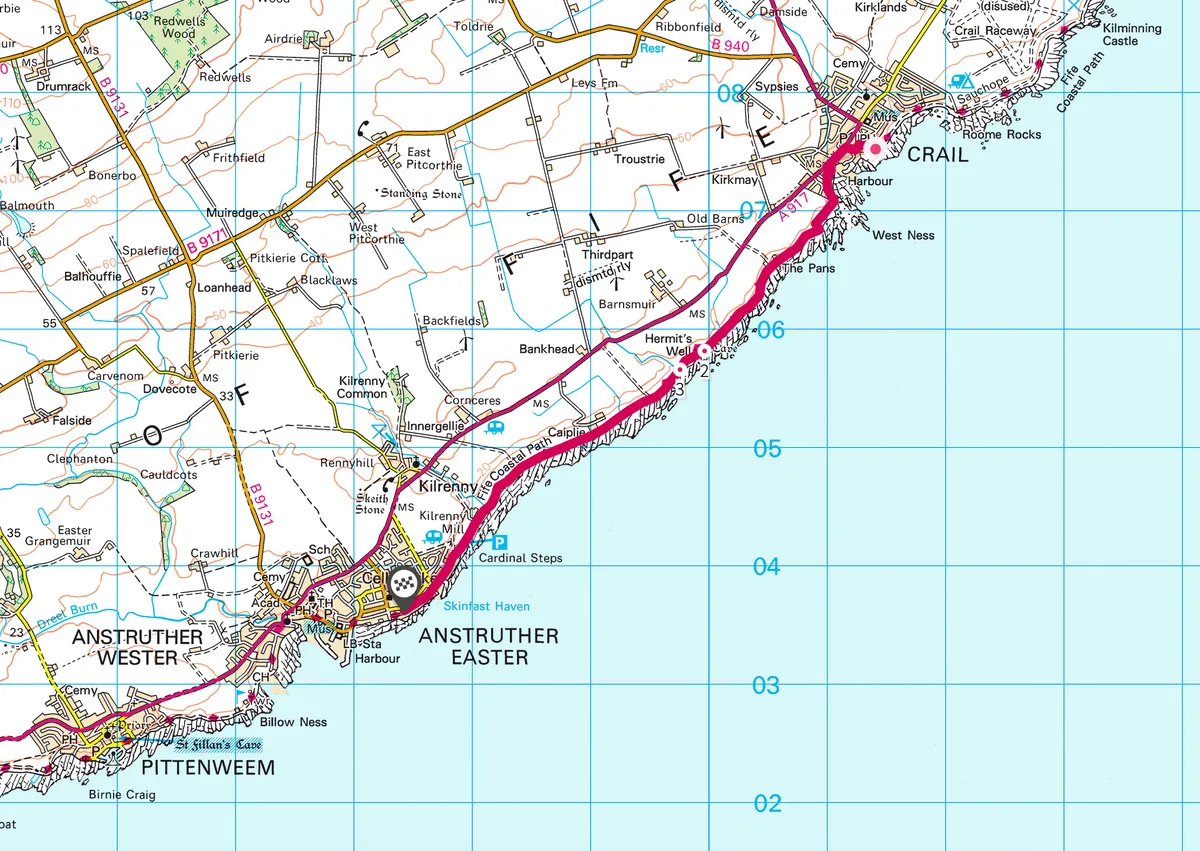The Kingdom of Fife, as this part of Scotland between the Firth of Tay and the Firth of Forth is rather grandly known, has a long and distinguished seafaring and trading tradition. On its south coast, the fishing villages, which bear the influences of their trading ties with the Low Countries, are extremely well preserved and, with their distinctive red-tiled roofs and narrow streets, are a delight to amble through.
From the latter half of the 19th century, the fishing industry developed in earnest. Fishing still runs deep and working harbours remain along the Fife coast. A walk along the gentle coastline in the invigorating sea air is the best way to discover the area and its heritage. It’s also straightforward thanks to the waymarked Fife Coastal Path.

One of the best sections is from Crail to Anstruther – a four-mile walk that takes roughly an hour and a half. Once you get to the other side there are regular buses to transport you back.
Crail history
Character-filled Crail is one of the oldest Royal Burghs in Scotland, having been granted its charter in 1178. Twisting narrow streets run down to the small harbour where you can buy fresh crab and lobster.
Previously, salt, wool, and the Crail capon – locally caught and smoked, or sun dried, haddock – were loaded for export here. Trade in the capon is believed to date as far back as the 9th century and brought a long-lived prosperity to the area, reflected in Tolbooth’s fish-shaped weather vane, which you can see in Marketgate.

Crail to Anstruther walk
3.8 miles/6.1km | 2 hours | moderate
1. Out of Crail
Walk up from the harbour on the steep, cobbled, lane known as the Hen’s Ladder, pass some venerable stone houses, and turn left along the main road. Soon you will see a sign for the Fife Coastal Path, which leads down to the sea.
The Firth of Forth stretches into the distance, with the Lothian coastline beyond. Keep an eye out for eider ducks, turnstones and shags as well as grey seals. The Isle of May a long rocky strip of an island in the middle of the Firth, is a winter home to the largest colony of grey seals on the east coast of Britain. You can also see the distinctive dome-shaped Bass Rock from North Berwick, which supports the largest single gannet colony in the world.
You may also like:
2. Sea-pounded caverns
A mile or so further on you reach the Caiplie Caves. This is a bleached and heavily weathered sandstone outcrop, which was pounded by the sea in post-glacial times. It is an incongruous site today as the outcrop stands a distance inland from the rocky shore, surrounded by grass. Monks and pilgrims en route to St Andrews carved crosses in the caves in times long past.

3. Anstruther
The way ahead leads pleasantly through pasture and to Cellardyke and its ancient harbour, Skinfast Haven. This sits by the edge of the small town of Anstruther (pronounced ‘ainster’), which made its fortune from the herring industry.
In common with Crail, Anstruther has a timeless air. Once the capital of the Scottish fishing industry, the town today sees mainly shellfish landed at its south-facing harbour. Fish and chips from the harbourside fish bars make a lip-smacking end to your walk.
Crail to Anstruther map
Crail to Anstruther map walking route and map

Useful Information
HOW TO GET THERE
Crail is 10 miles south-east of St Andrews and four miles north-east of Anstruther on the A917. The nearest station is at Leuchars, 13 miles away.
EAT
Anstruther Fish Bar
43-44 Shore Street, Anstruther KY10 3AQ
01333 310518
www.anstrutherfishbar.co.uk
Super-fresh battered fish is hard to beat from this establishment. The food here is so good that it won the UK Fish and Chip Shop of the Year in 2008/09.
STAY
The Waterfront
18-20 Shore Street, Anstruther KY10 3EA
01333 312200
www.anstruther-waterfront.co.uk
Sleep by the waterfront in a three-or four-star guest room and wake to memorable views
of Anstruther’s harbour just feet away.
NEARBY
Scottish Fisheries Museum
Harbourhead, Anstruther
01333 310628
www.scotfishmuseum.org
This museum offers a detailed, comprehensive, and well told story of fishing in Scotland and its people from earliest times to the present. Open all year. Adults £6, concessions £5, children free.